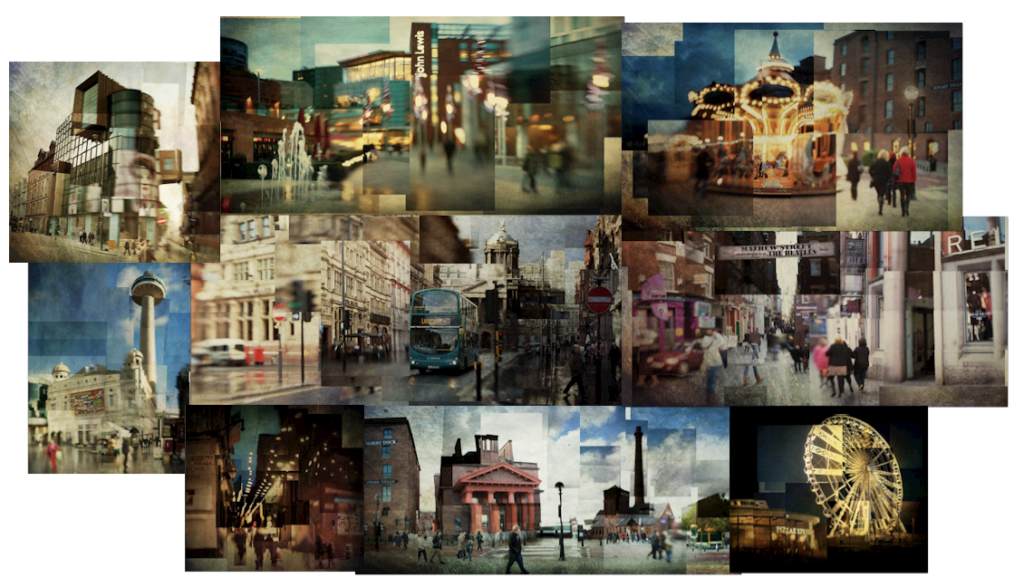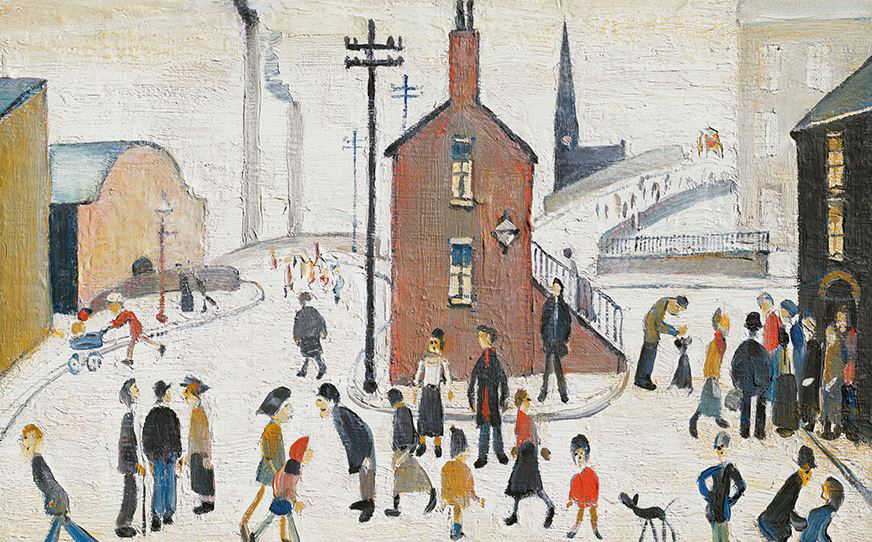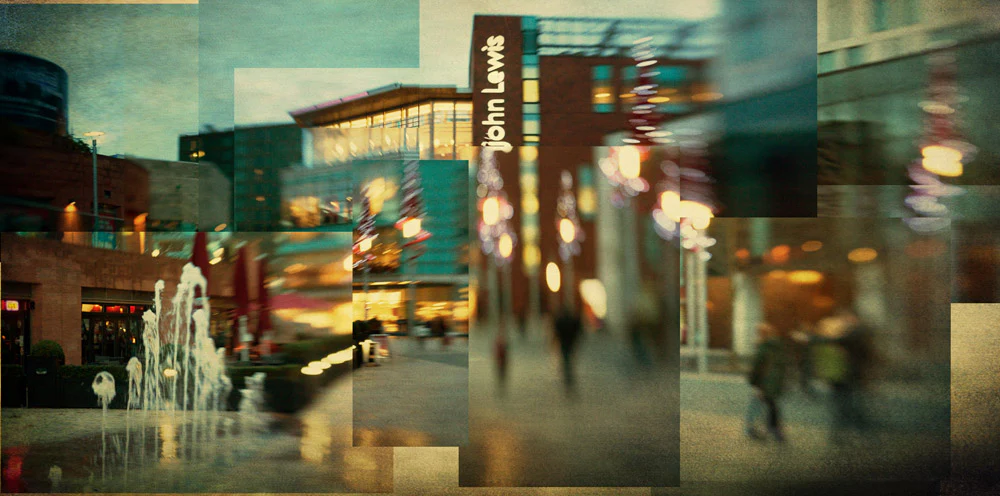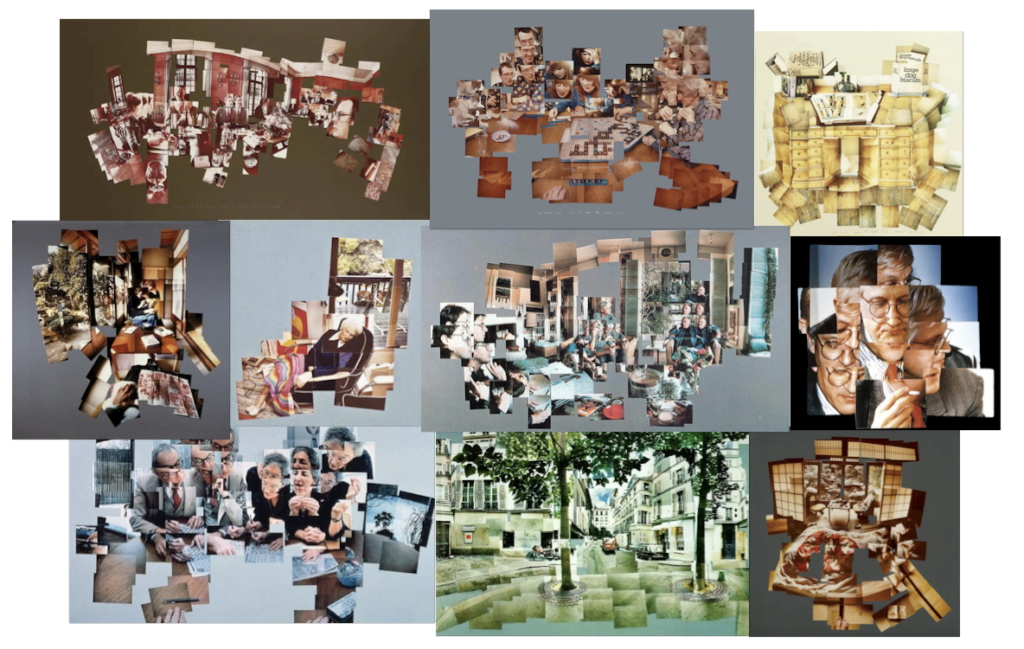Stephen McNally
Work by Stephen McNally

About his work
Stephen McNally is a photographer from North West England. He has a passion for landscapes and seascapes. The areas of his work which I have an interest in is his Cubism pieces. By looking at his images, I can see that they have mainly all been taken in Liverpool as I have been there many times. I have selected to study Stephen McNally’s work as I like how his images appear to be a more compelling, visually striking adaptation to photographic cubism. This is due to his use of an optic lens for a blurred effect and his editing techniques. No two fragments of his images appear the same. This adds more depth to the image, providing the viewer with lots of different aspects to engage in.
Interview with Lensbaby
In an interview with Lensbaby, a camera lens company, Stephen McNally stated that his work is inspired by David Hockney and another English artist, L.S. Lowry. He discovered David Hockney’s work when he visited a gallery displaying his joiners and decided to try the technique himself. L.S. Lowry on the other hand, is known for painting urban landscapes of streets with people presented as “matchstick men”. Here is a painting by L.S. Lowry:

McNally attempts to combine these styles in his images. He uses the Lensbaby Composer with Double Glass Optic which is a lens that distorts images and gives them a blurred effect. He stated that he likes to use this lens as it allows him to get a different image from the same shot by moving the lens around. When shooting images to create a joiner, he will stand in the same spot for a few hours, taking over a hundred different shots. He mainly focuses on the things which don’t move such as the buildings and then he photographs the people he wants to include as they pass by. After getting all the images he needs, he will return to his computer to assemble his joiner in photoshop. Altogether, Stephen McNally enjoys creating joiners as he likes to produce images that can’t typically be seen by the human eye.
Image Analysis

This is a joiner by Stephen McNally. This joiner consists of a variety of images which, together, form an abstract image. At first glance, it’s hard to work out what you’re looking at until you look closer and see that all of the images match up to create a street photograph. Each of the fragments of this joiner are all different, some more exposed than others and some blurred. This joiner looks like it was taken after the sun has set on a cold day, potentially due to the combination of cold tones for the sky and street and the warm tones of the lighting and red brick. The texture in this image has been muted by the blur-effect of the camera lens he used. It almost looks as if, from left to right, the intensity of the blur gradually increases, making the forms and lines harder to distinguish. I would say there is no clear focal point in this image as my eyes tend to look at each separate fragment, rather than focus in on one specific subject.
David Hockey
David Hockney’s Joiners

I have chosen to study David Hockney’s work as he is the creator of the term “Joiner” to describe photo collages of a cubist style. I have written about him previously in my Cubism blog post.
Comparison of Photographers
The key difference between Stephen McNally’s and David Hockney’s work is that Stephen McNally has a more abstract approach to photography. He uses a range of exposures and a special effect camera lens to create a distorted image. The subject of his photographs are mostly of street scenes whereas Hockney would photograph personal interactions such as playing a game of scrabble or of his mother sleeping. David Hockney’s approach to cubist photography is much more realistic than Stephen McNally’s as he aimed to mirror the human experience and sense of space in his joiners. Hockney’s joiners also consist of a lot more smaller images which are physical prints that have been glued down together, in comparison to Stephen McNally, who has larger images which have been combined using Photoshop. Although there are many differences in their work, there are a few similarities. The key similarities are such that they both focus on photographic Cubism and they use similar colours and tones in their images, mostly browns, beiges and greys. David Hockney has also produced some street scenes which is Stephen McNally’s focus in his joiners. Finally, when taking a closer look at David Hockney’s joiners, you can see that he also used a range of exposures but it is more subtle than Stephen McNally.
When I create my own joiners, I would like to combine the styles of each of these photographers by creating joiners which look realistic but have an abstract approach to them. I will do this by using a range of images from different perspectives and combining them, presenting each fragment differently, whether it be different exposures or a blur, so that there is a clear indication that my final outcome is more than just one image.
